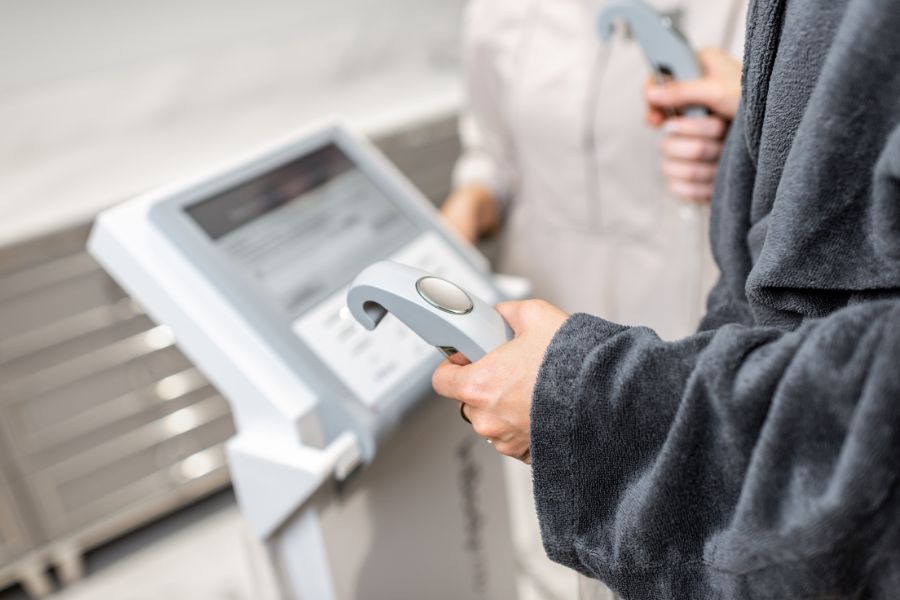While BMI is a widely used metric, especially for its simplicity, it has its limitations.
There are alternative methods that take into account factors like age, gender, and body composition more precisely.
Some of these alternatives include:
- Body Fat Percentage (Body Composition)
- Visceral Fat Measurement
- Waist-to-Hip Ratio (WHR)
- Waist-to-Height Ratio (WHtR)
- Body Adiposity Index (BAI)
- Dual-energy X-ray Absorptiometry (DEXA)
Body Fat Percentage

This measurement directly assesses the proportion of fat in the body, providing a more accurate reflection of body composition.
Methods include DEXA scans, Bioelectrical impedance analysis (BIA), hydrostatic weighing, and skinfold thickness measurements.
Visceral Fat Measurement
Visceral fat measurement involves assessing the amount of fat stored around internal organs in the abdominal cavity.
This specific type of fat is associated with health risks, such as cardiovascular issues and diabetes.
Techniques like magnetic resonance imaging (MRI) or computed tomography (CT) scans can provide insights into the amount of visceral fat, which is associated with health risks.
Waist-to-Hip Ratio (WHR)
This ratio is calculated by dividing the circumference of the waist by the circumference of the hips.
WHR is often used as an indicator of abdominal obesity and associated health risks.
Waist-to-Height Ratio (WHtR)
Similar to WHR, this ratio involves dividing the waist circumference by the height.
It’s considered a better indicator of health risks associated with abdominal obesity and may be more applicable across diverse populations.
Body Adiposity Index (BAI)
BAI estimates body fat percentage based on hip circumference and height, considering gender differences.
It aims to overcome some of the limitations of BMI, especially regarding body composition.
It has been shown to correlate well with body fat percentage.
Dual-energy X-ray Absorptiometry (DEXA)
Dual-energy X-ray Absorptiometry (DEXA) is a medical imaging technique that measures bone mineral density and provides valuable insights into body composition.
By utilizing two X-ray beams, DEXA distinguishes between bone, lean tissue, and fat mass, making it a precise tool for not only measuring bone density but also providing accurate readings of body fat and lean mass.
Conclusion
While BMI offers a small glimpse into overall health and fitness, it is a limited measurement.
There are much better methods of determining obesity and overall health.
As with anything it is best to consult with a doctor, especially before investing any time or money into expensive diagnostics.

Leave a Reply